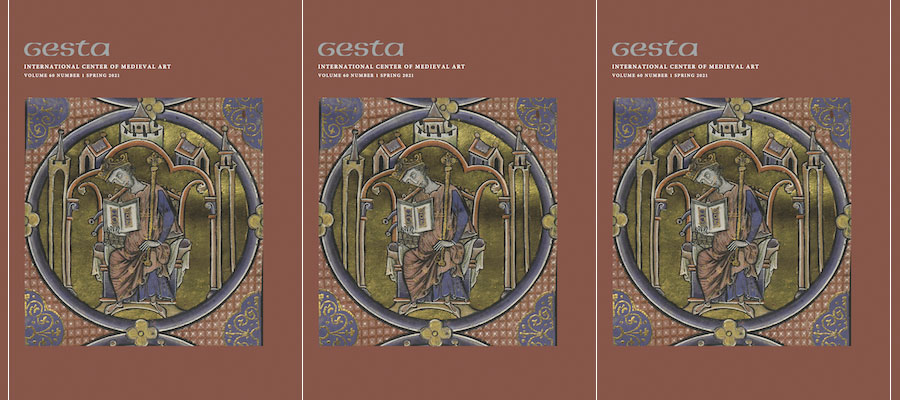Gesta, volume 60, number 1 (Spring 2021).
CONTENTS INCLUDE
Holy, Holy, Holy: Hearing the Voices of Angels
Sharon E. J. Gerstel, Chris Kyriakakis, Spyridon Antonopoulos, Konstantinos T. Raptis, and James Donahue
Were Byzantine writings about the intermingling of human and angelic voices within ecclesiastical settings merely reflections of mystical theology, or were they actual observations about the movement of sound? Focusing on Thessaloniki, we consider how Byzantine writers described the voices of angels, how certain chants in the divine services animated the voices of celestial beings, and how and where painters represented angels, particularly within the city’s monastic churches. We then turn to the study of the acoustical property of reverberation in eight Byzantine churches in the city in order to investigate whether undefined voices heard by subjective listening could be documented by objective, scientific testing.
Space, Image, Light: Toward an Understanding of Moldavian Architecture in the Fifteenth Century
Alice Isabella Sullivan, Gabriel-Dinu Herea, and Vladimir Ivanovici
Sunlight has long been harnessed to define and accentuate sacred space. This study explores several light phenomena carefully observed in the late fifteenth-century church of the Holy Cross at the former Pătrăuţi Monastery in Moldavia (modern Romania), arguing that the edifice was designed and decorated relative to the direction of sunlight on important dates throughout the liturgical year. While such use of natural light has been observed in other medieval and early modern Christian buildings, the case of Pătrăuţi stands out for its mise-en-scène of moving sunlight. Denoting awareness of cosmic phenomena and architectural know-how, the case study also attests to a careful coordination of the design of architecture, decoration, and ritual. The historic importance of the church, as one of the earliest and best-preserved examples of its kind in Moldavia, gives particular relevance to the studied light effects. The complex principles used to deploy light in this historically significant church invite further analyses along similar lines of inquiry for other medieval and early modern churches both in Moldavia and throughout the Byzantine and Slavic cultural spheres.
